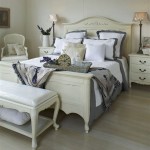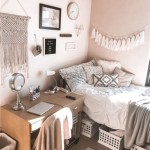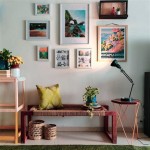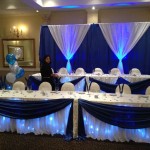Elevating Log Home Interiors: Decorating Tips for Rustic Elegance
Log homes present a unique canvas for interior design, blending the rugged charm of natural materials with the potential for sophisticated living spaces. Successfully decorating a log home requires a thoughtful approach that complements the inherent character of the wood while introducing elements of personal style and comfort. This article explores key decorating principles and practical tips for creating a log home interior that is both visually appealing and functionally efficient.
Embracing Natural Light and Existing Architectural Features
Maximizing natural light is crucial in log homes. The dark tones of the wood can sometimes create a sense of enclosure, so it's essential to leverage available light sources. This involves carefully considering window treatments and strategically positioning furniture to avoid blocking natural light flow.
Window treatments should be chosen to enhance, not obstruct, the view. Sheer curtains or lightweight blinds allow light to filter through while providing privacy. Avoid heavy drapes that can darken the interior. Consider skylights or additional windows during renovations to introduce more natural light into darker areas of the home.
The architectural features of a log home, such as exposed beams, stone fireplaces, and soaring ceilings, should be celebrated. These elements are integral to the home's overall aesthetic and should be incorporated into the decorating scheme. Painting or staining these features can alter the mood of a room significantly. Lighter stains or whitewashing can brighten the space, while darker stains can enhance the rustic appeal.
Log homes often feature open floor plans, which can be both a blessing and a challenge. Defining distinct living areas within the open space is essential for creating a sense of order and functionality. Area rugs, furniture placement, and changes in flooring can visually demarcate different areas, such as the living room, dining area, and kitchen.
Fireplaces are often a focal point in log homes. Enhance the fireplace by incorporating natural stone or reclaimed wood into the surround. A well-placed mantel can provide a display area for artwork, family photos, or other decorative items. Ensure the fireplace is properly maintained and inspected regularly for safety.
Selecting Appropriate Furniture and Textiles
The choice of furniture and textiles plays a vital role in achieving the desired aesthetic in a log home. Selecting pieces that complement the rustic character of the logs while providing comfort and functionality is essential.
Leather furniture is a classic choice for log homes, offering durability and a luxurious feel. Choose warm, earthy tones like brown, tan, or burgundy to complement the wood tones. Consider incorporating upholstered pieces with textured fabrics such as linen, wool, or cotton to add visual interest and create a cozy atmosphere.
Rugs can significantly impact the overall look and feel of a room. Natural fiber rugs like jute, sisal, or wool are excellent choices for log homes. These materials add texture and warmth while complementing the natural elements of the interior. Choose rugs with patterns or colors that coordinate with the furniture and wall decor.
Pay attention to the scale of the furniture. Overly large or bulky pieces can overwhelm a smaller log home, while undersized furniture can get lost in a larger space. Measure the rooms carefully and choose furniture that is appropriately proportioned to the available space.
Accessories such as throw pillows, blankets, and curtains can add pops of color and personality to the interior. Choose colors that complement the wood tones and create a harmonious color palette. Incorporate natural elements, such as antlers, pinecones, or branches, into the decor to enhance the rustic theme.
Consider the comfort and functionality of the furniture. Choose pieces that are comfortable to sit and relax on, and that provide ample storage space. Incorporate functional pieces such as coffee tables with storage drawers, ottomans with hidden compartments, or bookshelves to maximize space and organization.
Choosing a Complementary Color Palette and Decorative Accents
Selecting the right color palette is essential for creating a cohesive and visually appealing interior. The color palette should complement the natural tones of the logs and create the desired ambiance.
Earthy tones such as greens, browns, tans, and creams are natural choices for log homes. These colors create a warm and inviting atmosphere that complements the rustic character of the wood. Consider using accent colors such as reds, oranges, or blues to add pops of color and visual interest.
Contrast is an important element in interior design. Use lighter colors on the walls or ceilings to create a sense of spaciousness and balance the dark tones of the logs. Incorporate darker colors in the furniture, rugs, or accessories to add depth and dimension to the interior.
Metallic accents such as bronze, copper, or iron can add a touch of sophistication and elegance to a log home. Use these metals in lighting fixtures, hardware, or decorative items to create a focal point and add visual interest.
Artwork and decorative accents can reflect your personal style and enhance the overall aesthetic of the home. Choose artwork that complements the rustic theme, such as landscapes, wildlife paintings, or nature photography. Incorporate antique or vintage items to add character and charm to the interior.
Lighting is a crucial element in log home decorating. Layered lighting, including ambient, task, and accent lighting, can create a warm and inviting atmosphere. Use dimmer switches to adjust the lighting levels and create different moods. Incorporate natural lighting whenever possible by using sheer curtains or blinds and strategically placing mirrors to reflect light.
Consider incorporating elements of nature into the decor, such as houseplants, flowers, or branches. These elements add life and vibrancy to the interior and create a connection to the outdoors. Choose plants that thrive in the existing light conditions and that complement the overall design aesthetic.
Pay attention to the details. Small details such as hardware, trim, and molding can significantly impact the overall look and feel of a room. Choose hardware that complements the rustic theme, such as wrought iron or antique brass. Use natural wood trim or molding to enhance the architectural features of the home.
Maintain a sense of balance and harmony in the decor. Avoid overcrowding the space with too many decorative items or patterns. Choose a few key pieces that stand out and create a focal point. Keep the overall design simple and uncluttered to create a relaxing and inviting atmosphere.
Consider the acoustics of the space. Log homes can sometimes have poor acoustics due to the hard surfaces of the wood. Incorporate soft materials such as rugs, curtains, and upholstered furniture to absorb sound and reduce echo. Use acoustic panels or wall hangings to further improve the sound quality of the room.
Personalize the space. Ultimately, a log home should reflect the personal style and preferences of its owners. Incorporate family photos, heirlooms, or collections that are meaningful to you. Create a space that is comfortable, inviting, and reflects your unique personality.

19 Log Cabin Home Decorating Ideas For Your In 2025

19 Log Cabin Home Decorating Ideas For Your In 2025

Decorating Your Log Home With Themes Everything Homes

Pin On For The Home

Log Home Decorating Ideas And 10 Of The Best Places To Buy From Cabin Hub

Log Cabin Decorating Styles

Log Cabin Decor Ideas House Home Decorations And Accessories

19 Log Cabin Home Decorating Ideas For Your In 2025

3 Ways To Brighten Up The Interior Of A Log Cabin Home

Log Home Decorating Ideas And 10 Of The Best Places To Buy From Cabin Hub
Related Posts







